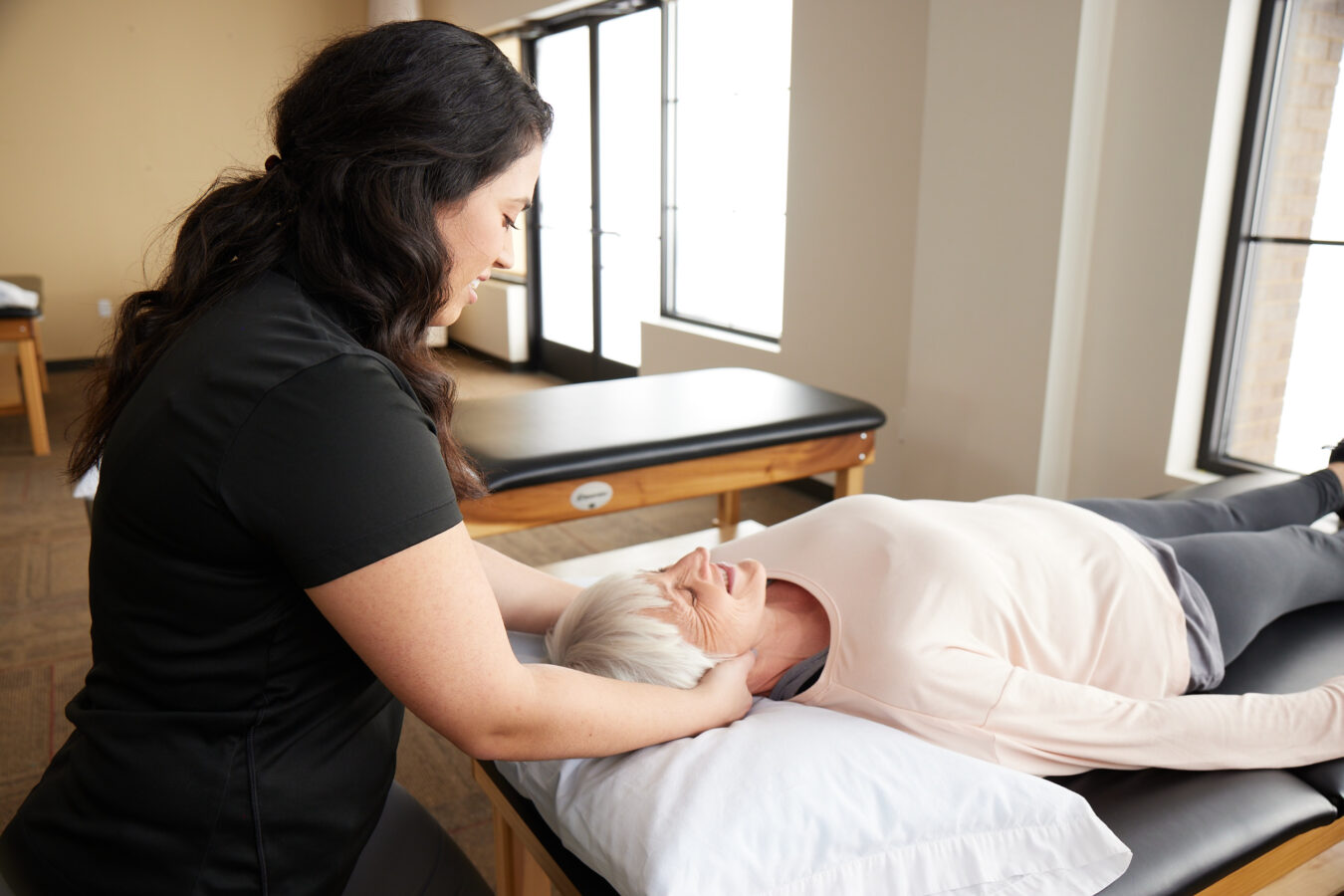
Medically reviewed by Misty Seidenburg
An irritated or pinched nerve in the neck can cause considerable neck and arm pain, among other problems. Yet this common condition can often be effectively managed with physical therapy, a proven method that alleviates these symptoms and enhances muscle strength and mobility.
Learn about the causes, risk factors, and treatments for cervical radiculopathy and discover simple home head, neck, and shoulder cervical radiculopathy exercises. These exercises are easy to perform, empowering you to take control of your condition.
The cervical spine, or the neck region of the spine, comprises seven stacked bones, or vertebrae. Muscles, tendons, ligaments, and nerves surround these bones. In between these bones are shock-absorbing vertebral discs. Cervical radiculopathy occurs when a nerve root from the spinal cord is compressed by surrounding muscle or other tissues.
Nerves serve many functions in the human body. They detect sensations in areas of the skin or internal organs and stimulate specific muscles and organs to help them move and function normally. A nerve that is compressed or irritated will not perform properly, impacting mobility and function.
Compression of a nerve in the cervical spine has a few primary causes:
Because the nerves connecting the cervical spine extend to the arms, shoulders, chest, and upper back, cervical radiculopathy symptoms can radiate from the neck into these areas.
Possible signs of a pinched nerve in the neck are:
Cervical radiculopathy pain is often described as sharp or burning. You may notice your discomfort increases when you move your neck a certain way. Placing your hands on your head can offer slight relief because this can temporarily ease pressure on some of the irritated nerves.
A pinched nerve can often be successfully managed with conservative, noninvasive treatments. shows that physical therapy’s combination of therapeutic exercise and manual therapy is most effective for relieving pain and increasing function and active range of motion (AROM).
A systematic review of clinical trials on manual therapy and cervical radiculopathy found these treatments were effective in symptom reduction in all studies, regardless of the type of therapies used.
Manual therapies used to relieve a pinched nerve include:
A physical therapy program for cervical radiculopathy also involves exercises to strengthen neck muscles and relieve pressure on cervical nerves. Physical therapists also provide education on ways to prevent neck and shoulder pain and maintain healthy posture to make everyday activities safer and more comfortable. Every physical therapy treatment plan is customized for the patient to reflect their unique needs, limitations, and goals.
If you have been diagnosed with a pinched nerve or notice tightness or soreness after a long day, try these simple and gentle movements to ease pressure on your neck and upper body. (Note: Always check with your healthcare provider or physical therapist before starting a new exercise program.)
These movements improve ROM and are especially helpful if you have forward head posture from working on a computer, gaming, or texting for long periods.
This exercise helps ease pain and stiffness and increase ROM.
Chin tucks, or cervical retraction, help increase the mobility of the neck
This move uses gravity to open up the cervical spine and reduce pressure in the joints.
Cervical radiculopathy exercises are also helpful for counteracting posture and alignment issues that cause pain and limit your mobility. If you have unexplained or persistent neck and shoulder pain, physical therapy may provide much-needed relief. You can request an appointment online or find a physical therapy clinic near you.

